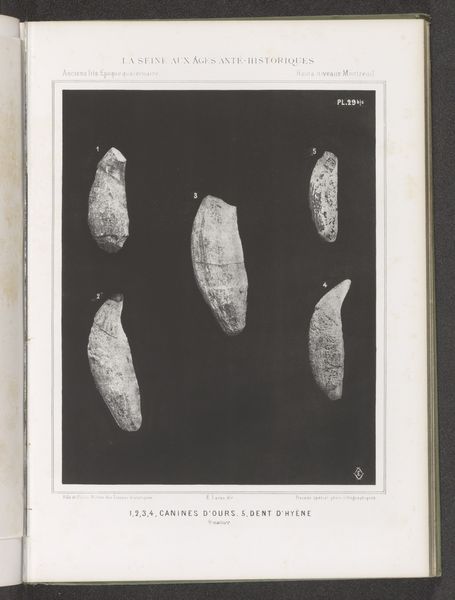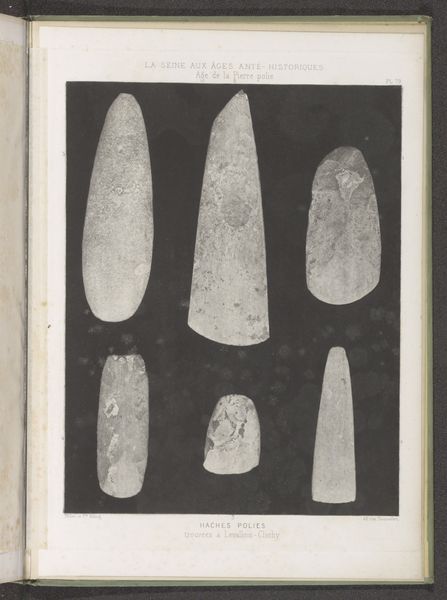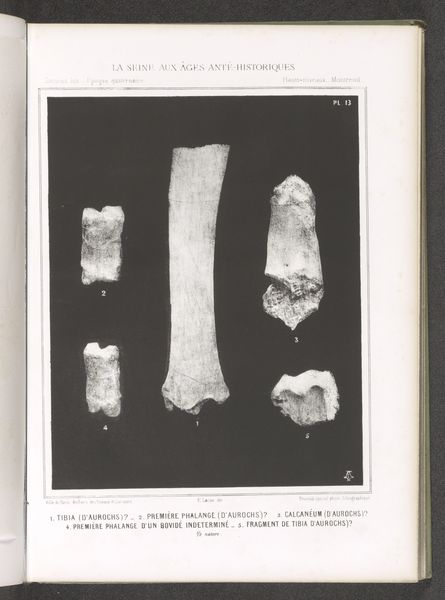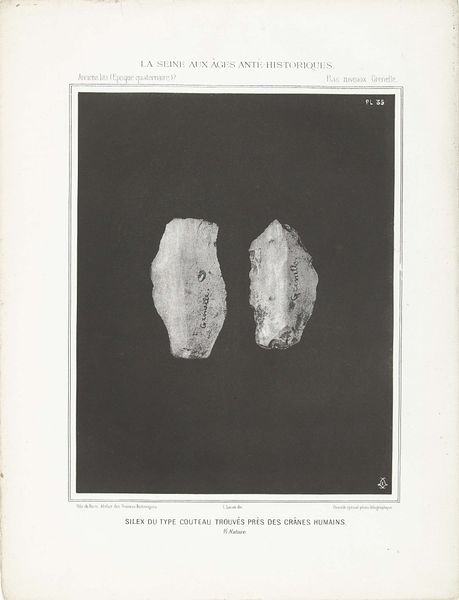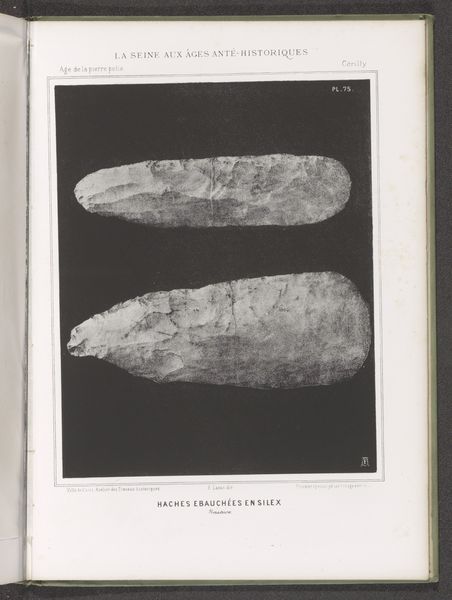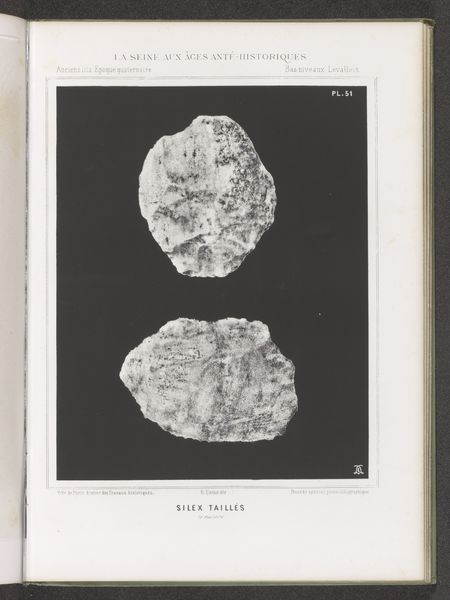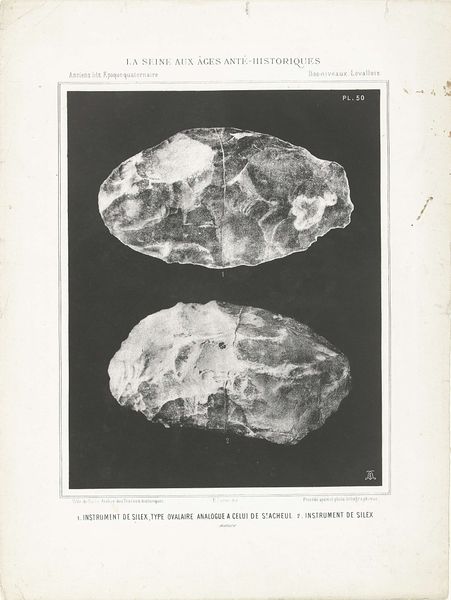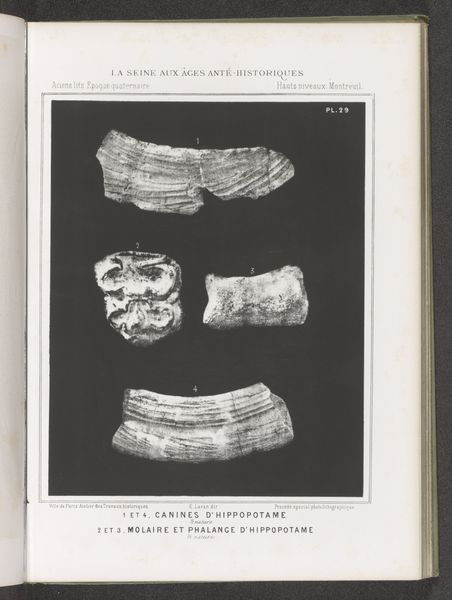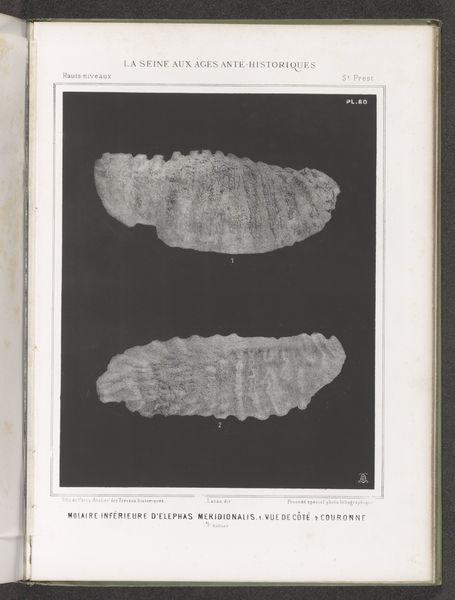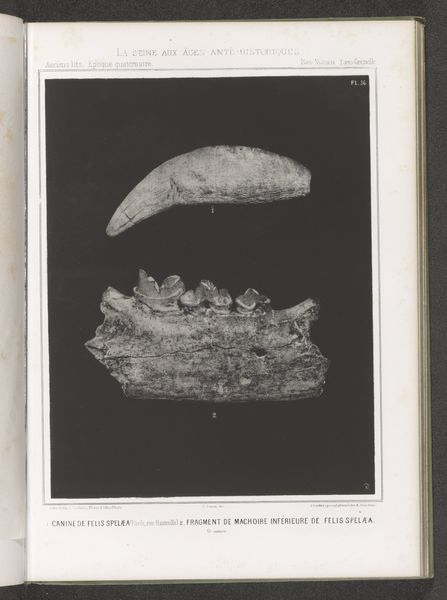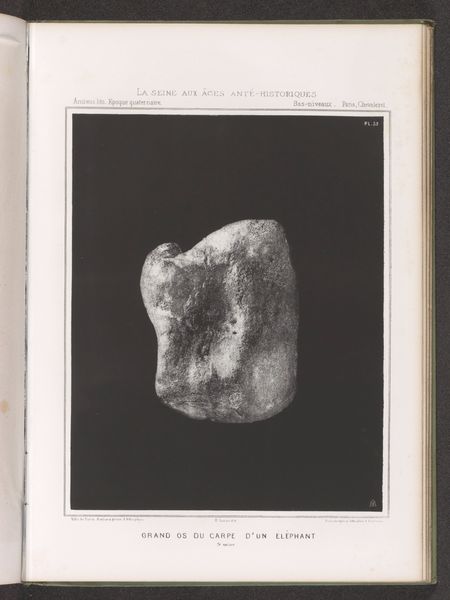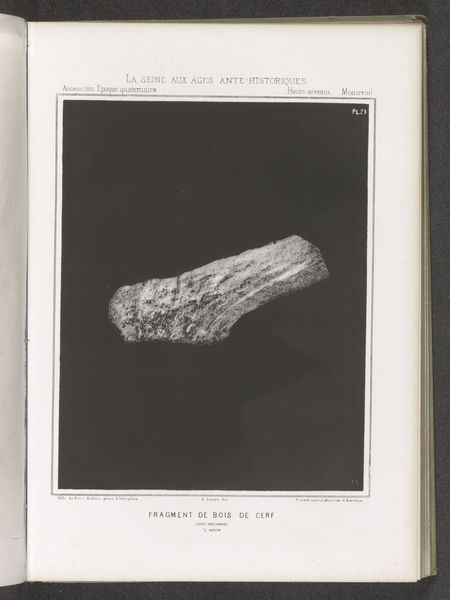
lithograph, print
#
lithograph
# print
#
geometric
#
ancient-mediterranean
#
academic-art
Dimensions: height 239 mm, width 189 mm
Copyright: Rijks Museum: Open Domain
These worked flints and a fragment of flint, created by an anonymous hand, speak volumes about early human ingenuity. Flint, a hard, sedimentary cryptocrystalline form of quartz, was carefully knapped – that is, struck with another stone – to create sharp edges. What is compelling about these objects is the shaping process. Each strike of the flint requires careful control, a deep understanding of the material’s properties. The resulting flakes would themselves have been useful. This points to a society where craft and survival were inextricably linked. The sharp edges created by the flint knapping would have served a multitude of purposes, from preparing food to crafting clothing. Flint tools like these represent early technological innovations, the result of trial and error, and the accumulation of knowledge passed down through generations. They challenge our conventional notions of art and labor, reminding us of the profound creativity inherent in even the most basic acts of making.
Comments
No comments
Be the first to comment and join the conversation on the ultimate creative platform.
